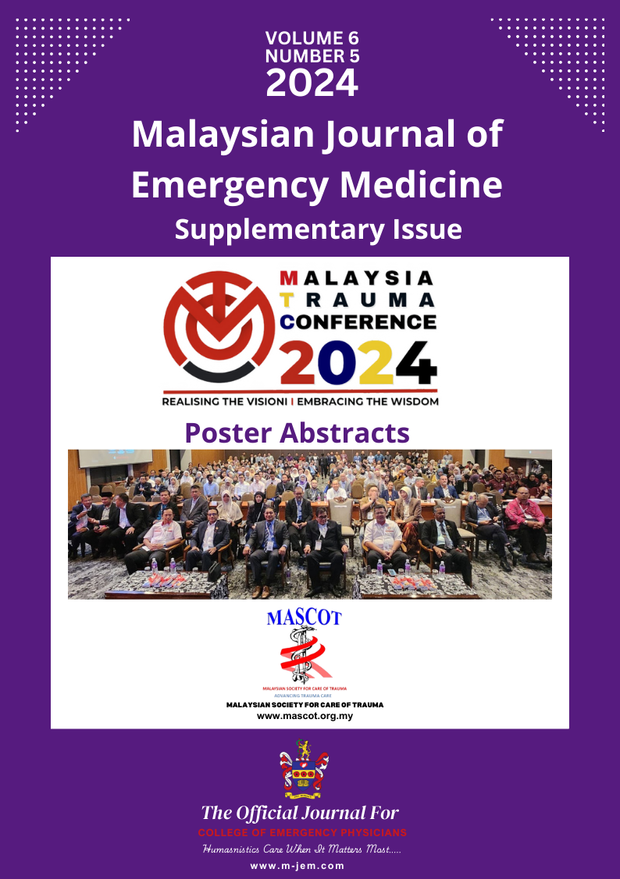A18 Riding Fine, Crashing Inside: Unveiling Bowel Injury Post-Blunt Trauma
Main Article Content
Abstract
INTRODUCTION
Blunt abdominal trauma from motor vehicle accidents (MVA) poses diagnostic challenges due to its diverse range of injuries and complex abdominal cavity involvement. Delayed presentations can result in serious consequences if not promptly identified and managed.
CASE DESCRIPTION
A 26-year-old gentleman presented post-car accident, attributed to microsleeping, complaining of mild right flank pain. Physical examination revealed a 4x3cm abrasion over the right flank. Otherwise, the abdomen was soft with no tenderness or guarding. He was discharged after a normal X-ray and negative Focused Assessment using Sonography in Trauma (FAST) scan. Two days later, worsening abdominal pain prompted a return to the ER and repeat erect CXR revealed subdiaphragmatic air. Contrast-enhanced CT (CECT) abdomen showed hemopneumoperitoneum with multiple sites of bowel injury. Emergency laparotomy confirmed the findings, necessitating surgical repair and stoma creation. Post-surgery, he achieved full recovery.
DISCUSSION
Blunt abdominal trauma presents significant diagnostic challenges especially when the initial symptoms are mild. This case underscores the importance of clinical reassessment and the potential need for further imaging, even when initial FAST results are negative. A negative FAST scan, even in a clinically stable patient, should be followed by ongoing observation and repeat FAST scans within 12 to 24 hours. Furthermore, it is recommended to provide a referral for reassessment at an emergency department or local clinic, should the patient’s abdominal pain worsens, to ensure timely and accurate management of potential injuries.
CONCLUSION
This case underscores the complexities involved in diagnosing abdominal injuries following blunt trauma, especially when initial assessments and imaging yield inconclusive or falsely reassuring. Clinicians should contemplate prolonging observation periods for trauma patients, even in the absence of initial signs pointing to severe injury. This proactive approach may improve the early detection of delayed complications, ultimately optimizing patient outcomes and diminishing the risk of post-discharge complications.
Metrics
Article Details

This work is licensed under a Creative Commons Attribution-NonCommercial 4.0 International License.

